CHEMICAL IDENTIFICATION
-
RTECS NUMBER :
-
MO6300000
-
CHEMICAL NAME :
-
Hexanoic acid, 6-amino-
-
CAS REGISTRY NUMBER :
-
60-32-2
-
BEILSTEIN REFERENCE NO. :
-
0906872
-
LAST UPDATED :
-
199806
-
DATA ITEMS CITED :
-
21
-
MOLECULAR FORMULA :
-
C6-H13-N-O2
-
MOLECULAR WEIGHT :
-
131.20
-
WISWESSER LINE NOTATION :
-
Z5VQ
HEALTH HAZARD DATA
ACUTE TOXICITY DATA
-
TYPE OF TEST :
-
Standard Draize test
-
ROUTE OF EXPOSURE :
-
Administration into the eye
-
SPECIES OBSERVED :
-
Rodent - rabbit
-
REFERENCE :
-
85JCAE "Prehled Prumyslove Toxikologie; Organicke Latky," Marhold, J., Prague, Czechoslovakia, Avicenum, 1986 Volume(issue)/page/year: -,738,1986 ** ACUTE TOXICITY DATA **
-
TYPE OF TEST :
-
TDLo - Lowest published toxic dose
-
ROUTE OF EXPOSURE :
-
Oral
-
SPECIES OBSERVED :
-
Human - man
-
DOSE/DURATION :
-
1778 mg/kg/8D-I
-
TOXIC EFFECTS :
-
Kidney, Ureter, Bladder - changes in tubules (including acute renal failure, acute tubular necrosis) Kidney, Ureter, Bladder - hematuria Nutritional and Gross Metabolic - body temperature increase
-
REFERENCE :
-
AJKDDP American Journal of Kidney Diseases. (Grune & Stratton, Inc., Journal Subscription Dept., POB 6280, Duluth, MN 55806) V.1- 1981- Volume(issue)/page/year: 8,441,1986
-
TYPE OF TEST :
-
TDLo - Lowest published toxic dose
-
ROUTE OF EXPOSURE :
-
Multiple routes
-
SPECIES OBSERVED :
-
Human - man
-
DOSE/DURATION :
-
14400 mg/kg/59D-I
-
TOXIC EFFECTS :
-
Behavioral - muscle weakness Kidney, Ureter, Bladder - hematuria
-
REFERENCE :
-
BJURAN British Journal of Urology. (Longman Group Ltd., POB 11318, Birmingham, AL 35202) V.1- 1929- Volume(issue)/page/year: 60,81,1987
-
TYPE OF TEST :
-
LD - Lethal dose
-
ROUTE OF EXPOSURE :
-
Oral
-
SPECIES OBSERVED :
-
Rodent - rat
-
DOSE/DURATION :
-
>10 gm/kg
-
TOXIC EFFECTS :
-
Details of toxic effects not reported other than lethal dose value
-
REFERENCE :
-
PHMCAA Pharmacologist. (American Soc. for Pharmacology and Experimental Therapeutics, 9650 Rockville Pike, Bethesda, MD 20014) V.1- 1959- Volume(issue)/page/year: 3,62,1961
-
TYPE OF TEST :
-
LD50 - Lethal dose, 50 percent kill
-
ROUTE OF EXPOSURE :
-
Intraperitoneal
-
SPECIES OBSERVED :
-
Rodent - rat
-
DOSE/DURATION :
-
7 gm/kg
-
TOXIC EFFECTS :
-
Details of toxic effects not reported other than lethal dose value
-
REFERENCE :
-
PHMCAA Pharmacologist. (American Soc. for Pharmacology and Experimental Therapeutics, 9650 Rockville Pike, Bethesda, MD 20014) V.1- 1959- Volume(issue)/page/year: 3,62,1961
-
TYPE OF TEST :
-
LD50 - Lethal dose, 50 percent kill
-
ROUTE OF EXPOSURE :
-
Intravenous
-
SPECIES OBSERVED :
-
Rodent - rat
-
DOSE/DURATION :
-
3300 mg/kg
-
TOXIC EFFECTS :
-
Details of toxic effects not reported other than lethal dose value
-
REFERENCE :
-
PHMCAA Pharmacologist. (American Soc. for Pharmacology and Experimental Therapeutics, 9650 Rockville Pike, Bethesda, MD 20014) V.1- 1959- Volume(issue)/page/year: 3,62,1961
-
TYPE OF TEST :
-
LD50 - Lethal dose, 50 percent kill
-
ROUTE OF EXPOSURE :
-
Oral
-
SPECIES OBSERVED :
-
Rodent - mouse
-
DOSE/DURATION :
-
14300 mg/kg
-
TOXIC EFFECTS :
-
Details of toxic effects not reported other than lethal dose value
-
REFERENCE :
-
NIIRDN Drugs in Japan (Ethical Drugs). (Yakugyo Jiho Co., Ltd., Tokyo, Japan) Volume(issue)/page/year: 6,79,1982
-
TYPE OF TEST :
-
LD50 - Lethal dose, 50 percent kill
-
ROUTE OF EXPOSURE :
-
Subcutaneous
-
SPECIES OBSERVED :
-
Rodent - mouse
-
DOSE/DURATION :
-
5790 mg/kg
-
TOXIC EFFECTS :
-
Details of toxic effects not reported other than lethal dose value
-
REFERENCE :
-
NIIRDN Drugs in Japan (Ethical Drugs). (Yakugyo Jiho Co., Ltd., Tokyo, Japan) Volume(issue)/page/year: -,62,1995
-
TYPE OF TEST :
-
LD50 - Lethal dose, 50 percent kill
-
ROUTE OF EXPOSURE :
-
Intravenous
-
SPECIES OBSERVED :
-
Rodent - mouse
-
DOSE/DURATION :
-
4900 mg/kg
-
TOXIC EFFECTS :
-
Behavioral - altered sleep time (including change in righting reflex) Lungs, Thorax, or Respiration - dyspnea
-
REFERENCE :
-
AAREAV Anesthesie, Analgesie, Reanimation. (Paris, France) V.14-38, 1957-81. Volume(issue)/page/year: 22,481,1965
-
TYPE OF TEST :
-
LD50 - Lethal dose, 50 percent kill
-
ROUTE OF EXPOSURE :
-
Oral
-
SPECIES OBSERVED :
-
Mammal - dog
-
DOSE/DURATION :
-
>7 gm/kg
-
TOXIC EFFECTS :
-
Details of toxic effects not reported other than lethal dose value
-
REFERENCE :
-
NIIRDN Drugs in Japan (Ethical Drugs). (Yakugyo Jiho Co., Ltd., Tokyo, Japan) Volume(issue)/page/year: 6,79,1982
-
TYPE OF TEST :
-
LDLo - Lowest published lethal dose
-
ROUTE OF EXPOSURE :
-
Intravenous
-
SPECIES OBSERVED :
-
Mammal - dog
-
DOSE/DURATION :
-
2150 mg/kg
-
TOXIC EFFECTS :
-
Behavioral - convulsions or effect on seizure threshold
-
REFERENCE :
-
PHMCAA Pharmacologist. (American Soc. for Pharmacology and Experimental Therapeutics, 9650 Rockville Pike, Bethesda, MD 20014) V.1- 1959- Volume(issue)/page/year: 3,62,1961
-
TYPE OF TEST :
-
LD50 - Lethal dose, 50 percent kill
-
ROUTE OF EXPOSURE :
-
Oral
-
SPECIES OBSERVED :
-
Primate - monkey
-
DOSE/DURATION :
-
>7 gm/kg
-
TOXIC EFFECTS :
-
Details of toxic effects not reported other than lethal dose value
-
REFERENCE :
-
NIIRDN Drugs in Japan (Ethical Drugs). (Yakugyo Jiho Co., Ltd., Tokyo, Japan) Volume(issue)/page/year: 6,79,1982
-
TYPE OF TEST :
-
LD50 - Lethal dose, 50 percent kill
-
ROUTE OF EXPOSURE :
-
Intravenous
-
SPECIES OBSERVED :
-
Primate - monkey
-
DOSE/DURATION :
-
>2 gm/kg
-
TOXIC EFFECTS :
-
Details of toxic effects not reported other than lethal dose value
-
REFERENCE :
-
NIIRDN Drugs in Japan (Ethical Drugs). (Yakugyo Jiho Co., Ltd., Tokyo, Japan) Volume(issue)/page/year: 6,79,1982
-
TYPE OF TEST :
-
LDLo - Lowest published lethal dose
-
ROUTE OF EXPOSURE :
-
Intravenous
-
SPECIES OBSERVED :
-
Rodent - guinea pig
-
DOSE/DURATION :
-
19800 mg/kg
-
TOXIC EFFECTS :
-
Details of toxic effects not reported other than lethal dose value
-
REFERENCE :
-
AAREAV Anesthesie, Analgesie, Reanimation. (Paris, France) V.14-38, 1957-81. Volume(issue)/page/year: 22,481,1965 ** OTHER MULTIPLE DOSE TOXICITY DATA **
-
TYPE OF TEST :
-
TDLo - Lowest published toxic dose
-
ROUTE OF EXPOSURE :
-
Oral
-
SPECIES OBSERVED :
-
Rodent - rat
-
DOSE/DURATION :
-
32500 mg/kg/13W-I
-
TOXIC EFFECTS :
-
Cardiac - changes in heart weight Blood - changes in erythrocyte (RBC) count Blood - changes in leukocyte (WBC) count
-
REFERENCE :
-
APTOA6 Acta Pharmacologica et Toxicologica. (Copenhagen, Denmark) V.1-59, 1945-86. For publisher information, see PHTOEH Volume(issue)/page/year: 22,340,1965
-
TYPE OF TEST :
-
TDLo - Lowest published toxic dose
-
ROUTE OF EXPOSURE :
-
Oral
-
SPECIES OBSERVED :
-
Rodent - rat
-
DOSE/DURATION :
-
337 gm/kg/30D-C
-
TOXIC EFFECTS :
-
Behavioral - excitement Behavioral - food intake (animal) Nutritional and Gross Metabolic - weight loss or decreased weight gain
-
REFERENCE :
-
PHMCAA Pharmacologist. (American Soc. for Pharmacology and Experimental Therapeutics, 9650 Rockville Pike, Bethesda, MD 20014) V.1- 1959- Volume(issue)/page/year: 3,62,1961 ** REPRODUCTIVE DATA **
-
TYPE OF TEST :
-
TDLo - Lowest published toxic dose
-
ROUTE OF EXPOSURE :
-
Oral
-
DOSE :
-
153 gm/kg
-
SEX/DURATION :
-
female 40 day(s) pre-mating female 1-21 day(s) after conception
-
TOXIC EFFECTS :
-
Reproductive - Fertility - female fertility index (e.g. # females pregnant per # sperm positive females; # females pregnant per # females mated)
-
REFERENCE :
-
APTOA6 Acta Pharmacologica et Toxicologica. (Copenhagen, Denmark) V.1-59, 1945-86. For publisher information, see PHTOEH Volume(issue)/page/year: 22,340,1965
-
TYPE OF TEST :
-
TDLo - Lowest published toxic dose
-
ROUTE OF EXPOSURE :
-
Oral
-
DOSE :
-
190 gm/kg
-
SEX/DURATION :
-
male 38 day(s) pre-mating
-
TOXIC EFFECTS :
-
Reproductive - Fertility - male fertility index (e.g. # males impregnating females per # males exposed to fertile nonpregnant females)
-
REFERENCE :
-
APSXAS Acta Pharmaceutica Suecica. (Apotekarsocieteten-Farmacevtiska Foereningen, Box 1136, S-111, 81 Stockholm, Sweden) V.1- 1964- Volume(issue)/page/year: 3,115,1966
-
TYPE OF TEST :
-
TDLo - Lowest published toxic dose
-
ROUTE OF EXPOSURE :
-
Intrauterine
-
DOSE :
-
15 mg/kg
-
SEX/DURATION :
-
female 6 day(s) after conception
-
TOXIC EFFECTS :
-
Reproductive - Fertility - post-implantation mortality (e.g. dead and/or resorbed implants per total number of implants)
-
REFERENCE :
-
BIREBV Biology of Reproduction. (Soc. for the Study of Reproduction, 309 W. Clark St., Champaign, IL 61820) V.1- 1969- Volume(issue)/page/year: 23,553,1980 *** NIOSH STANDARDS DEVELOPMENT AND SURVEILLANCE DATA *** NIOSH OCCUPATIONAL EXPOSURE SURVEY DATA : NOES - National Occupational Exposure Survey (1983) NOES Hazard Code - X5412 No. of Facilities: 609 (estimated) No. of Industries: 2 No. of Occupations: 8 No. of Employees: 11144 (estimated) No. of Female Employees: 8251 (estimated)
|

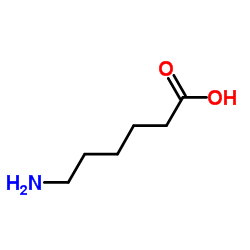
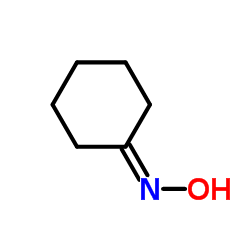
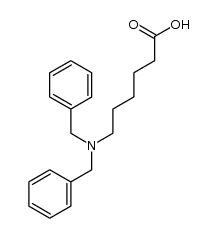

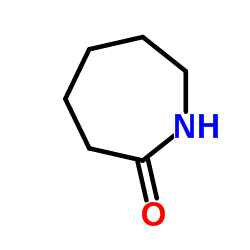


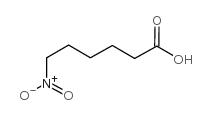


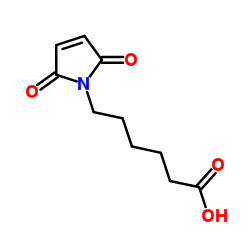
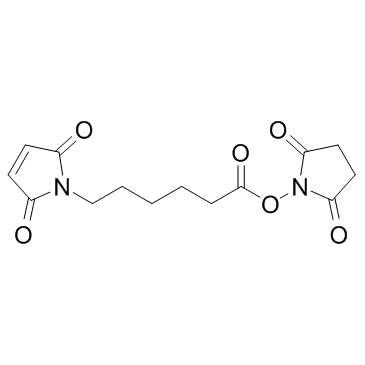
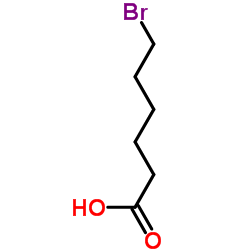


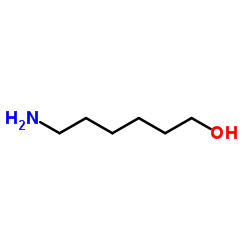
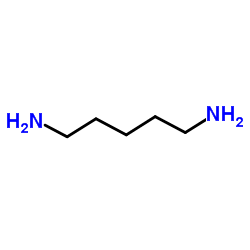
![6-[[(1,1-Dimethylethoxy)carbonyl]amino]hexanoic acid 2,5-dioxo-1-pyrrolidinyl ester structure](https://image.chemsrc.com/caspic/026/51513-80-5.png)
